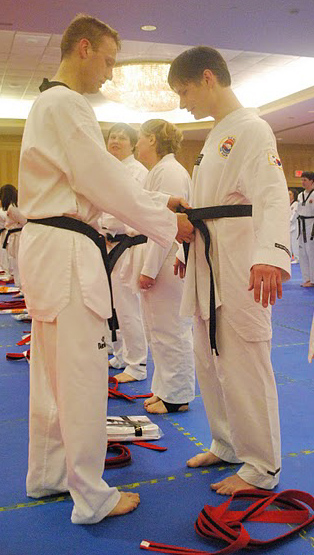Being motivated generally means being drawn toward something. Even running away from a ravenous smilodon is motivated in a way by a desperate desire to keep on living (though when we get down to the reptile brain like that–eating, sleeping, procreating–the rules are a little different, and a little more fundamental, than when we’re trying to motivate ourselves to complete a term paper or clean out the garage).
The question is, what are you being drawn toward? You don’t necessarily need an end goal, and in fact most kinds of personal improvement have to do with acquiring habits you’ll want to keep for the future, habits you’ll want to keep for a lifetime rather than just use to get to a finish line. The best way to complete one novel is to become the kind of person who writes a lot; the best way to lose weight and stay fit is to become the kind of person who eats well and loves to exercise; and so on.
So we’re not looking for some kind of end state or finish line: instead, we’re looking for a vision of the future, some point along the line when you’ve accomplished some of the things you would most like to accomplish. What does that vision look like?
The reason this vision for the future is important is because we tend to align ourselves with imagined situations, an effect called “mood congruity.” If I vividly imagine a cold, drizzly, depressing day, I’ll tend to feel more depressed. If I vividly imagine a ravenous smilodon, I’ll tend to feel afraid. And if I picture myself in a house that is perfectly organized, I’ll tend to get excited about organizing my house. Our mental imagery affects our current mood and even our desires. That’s why thinking about playing video games instead of studying is a bad way to prevent yourself from playing video games instead of studying: the more we picture something, the more we tend to make choices that are affected by the image.
One last note about drawing ourselves forward: while visions of a good future can help make us enthusiastic about making good choices in the present, the future in question doesn’t have to be a distant one. For instance, if I want to clean the garage, it can be very effective to imagine myself just a couple of hours in the future with a small part of the garage completely taken care of, even if the garage as a whole is going to take me weeks to sort out. Or I might imagine what it will be like to show my spouse that newly-clean corner of the garage, or to think about what I’ll do in a couple of weeks with the money I make selling unneeded things I dig out of the garage on Craigslist. In fact, sometimes the little, short-term payoffs are the most motivating.
So short-term or long, what’s drawing you forward?
Photo by rogiro












